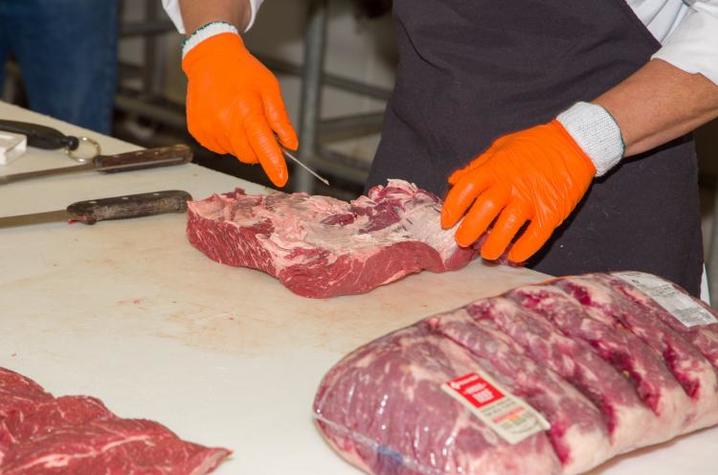UK Experts: Consumers Feeling the Meat Price Sticker Shock Have Ways to Save

LEXINGTON, Ky. (June 8, 2022) — Grocery and gas prices are on the rise, and sticker-shocked consumers are looking for ways to cope and stick to their budgets. University of Kentucky College of Agriculture, Food and Environment meat scientist Gregg Rentfrow and agricultural economist Kenny Burdine recently offered some insight into the situation and how to deal with it.
“Spikes in fuel costs cause everything to go up,” Rentfrow said. “But also, we have to think about labor and higher production and transportation costs. The cost of corn and grain is high and what do we feed livestock? We feed them grain. So, there are many factors that go into the reason you’re seeing higher prices for meat at the grocery store.”
The U.S. Department of Agriculture’s National Retail Report showed the beef retail price was up 15% from the same time last year. For specifics, access the report here: www.ams.usda.gov/mnreports/lswbfrtl.pdf.
Rentfrow explained that animal supply is another complicating factor leading to the rise in price as the industry still hasn’t quite recovered from the nationwide labor shortages during the COVID-19 pandemic.
“It’s like a perfect storm of everything happening and then you throw in the record-high fuel prices we are all dealing with, and we have to find ways to cut corners and save some money,” Rentfrow said. “A lot of packers are holding supply in cold storage and there’s a lot of speculation as to why they are doing that when we have the demand.”
He said holding meat in cold storage is a way to hedge against summer demand.
“We tend to have more of a demand for meat, especially the middle meats, because summer is grilling season, so retailers may be stockpiling stuff to release this summer and guard against having a big crash in prices.”
Burdine said rising fuel prices and general inflation impacts consumer purchasing power, which affects meat consumption.
“The more expensive meats tend to see the biggest impact in a situation like this,” he said. “Beef is typically more impacted than pork or chicken. In the past, I’ve also seen consumers trend toward buying lower-value cuts within a species, such as buying more ground beef, less steak.”
Rentfrow said consumers don’t always have to choose lower-value cuts when planning meals for the family on a budget or when dining out.
“This is where I draw on my 14 years of working in grocery stores and retail meat cutters,” he said. “Buying in bulk does help save, but some people are intimidated by buying large quantities or large cuts. For example, buying a whole pork loin can save you some money, and what a lot of folks don’t know is that you can ask the meat cutter at the store to cut it down into smaller cuts and then, you can get several meals out of that one pork loin.”
Rentfrow said even most club stores will cut the bulk packages into smaller ones for consumers. He said consumers can also break it down into smaller packages at home and use a home vacuum sealer to keep meat fresh longer in the freezer.
Some of the larger steaks, like T-bones and sirloins, are actually big enough to feed more than one person.
“If I’m going out to dinner, I can get a porterhouse steak, which contains a filet minion and a typical New York strip steak,” he said. “So, it can feed both of us and we’ve saved a little money in the process. You can do that at home as well. One other thing is that ribeye steaks are great, but don’t forget about the less expensive chuck eye steak.”
Rentfrow also mentioned a few other tactics for saving at the grocery store including taking advantage of coupons, utilizing store loyalty programs and shopping alone with a shopping list.
“The inflationary pressure being seen across most all segments of our economy is real,” Burdine said. “While there is potential for consumer demand to be negatively impacted by decreased purchasing power going forward, the supply picture is going to get even tighter. Dry weather in much of the country, combined with high input costs and strong cull cow values continue to lead to decreases in beef cow numbers. Tightening cattle supplies will mean reductions in beef production in the coming years.”
As the state’s flagship, land-grant institution, the University of Kentucky exists to advance the Commonwealth. We do that by preparing the next generation of leaders — placing students at the heart of everything we do — and transforming the lives of Kentuckians through education, research and creative work, service and health care. We pride ourselves on being a catalyst for breakthroughs and a force for healing, a place where ingenuity unfolds. It's all made possible by our people — visionaries, disruptors and pioneers — who make up 200 academic programs, a $476.5 million research and development enterprise and a world-class medical center, all on one campus.




